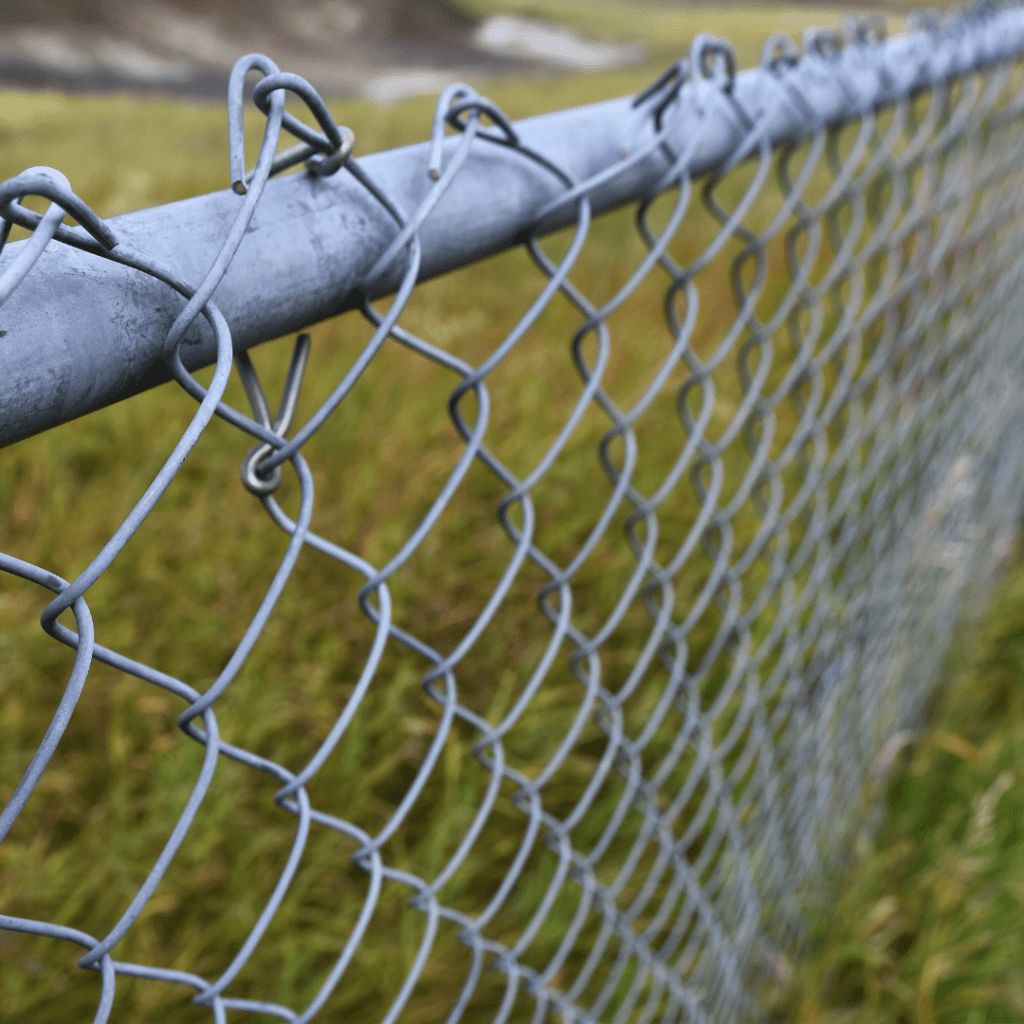Have you ever wondered about the different types of fences and how they can enhance security? Well, you’re in the right place! At Fencedude.com, we’re all about fences and we’ve got you covered with comprehensive and engaging content. In this article, we’ll dive into the topic of enhancing security with chain-link fences. But don’t worry, this is just the beginning of the fence knowledge we have in store for you!
Chain-link fences are a popular choice for enhancing security due to their durability and visibility. These fences are made up of interlocking metal wires, creating a woven pattern that forms a sturdy barrier. They are known for their strength and are difficult to climb, making them an effective deterrent for intruders. Additionally, the open weave design allows for unobstructed views, which can be beneficial for monitoring and surveillance purposes.
But that’s not all! In our upcoming articles, we’ll explore the benefits and considerations of other fence types, sizes, shapes, and materials. We’ll discuss wooden fences, vinyl fences, metal fences, and more, so you can make an informed decision when selecting the perfect fence for your needs. We’ll also provide answers to the most common questions about fences, so you’ll have all the information you need in one place. Stay tuned for more valuable fence knowledge!
Title: Enhancing Security with Chain-Link Fences
Introduction to Chain-Link Fences
Chain-link fences are a popular choice for both residential and commercial properties due to their durability, low maintenance requirements, and cost-effectiveness. These fences consist of a woven steel wire mesh, commonly known as chain-link fabric, supported by posts made of various materials such as galvanized steel or aluminum. With their open design, chain-link fences provide security without obstructing visibility. In this article, we will delve into the advantages and disadvantages of chain-link fences, explore ways to enhance their security features, discuss the installation process, maintenance and care, and provide tips for enhancing privacy and personalizing these fences.
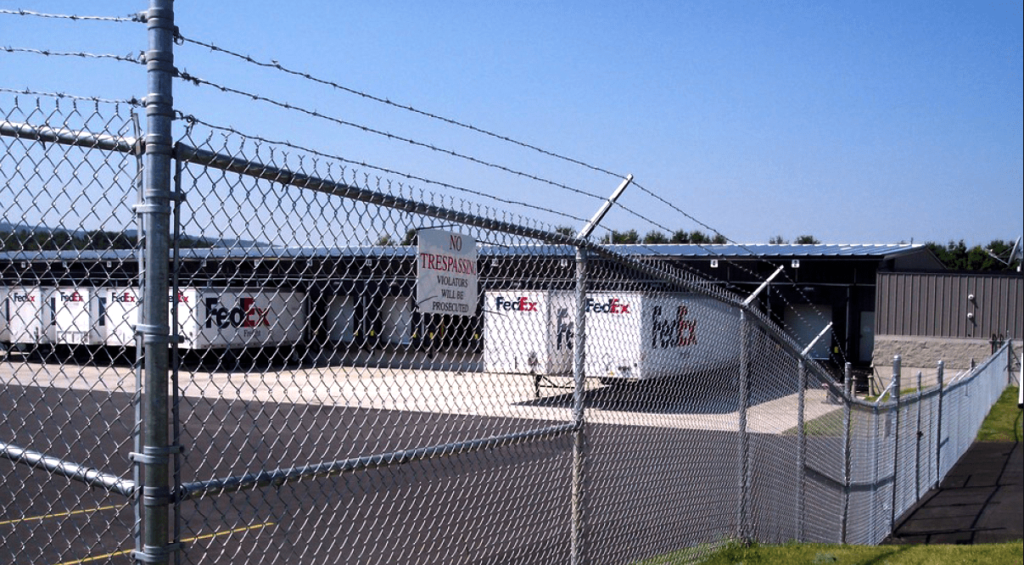
Advantages of Chain-Link Fences
Durability and long lifespan
One of the major advantages of chain-link fences is their durability. The steel wire used in the construction of these fences is galvanized, making it resistant to rust and corrosion. This ensures that the fence can withstand harsh weather conditions and last for many years without significant damage.
Low maintenance requirements
Chain-link fences require minimal maintenance compared to other types of fences. They do not need regular painting or staining, and occasional cleaning with water and mild detergent is usually sufficient. This makes chain-link fences a practical and time-saving choice for property owners.
Cost-effectiveness
Chain-link fences are more affordable compared to many other fence options. The materials used in their construction are relatively inexpensive, and installation costs are typically lower as well. This makes chain-link fences an attractive choice for property owners looking for a budget-friendly security solution.
Versatility and customization options
Chain-link fences offer a wide range of customization options to suit different needs and preferences. They are available in various heights, gauges (thickness of the wires), and mesh sizes. Property owners can also choose between different colors or add privacy slats or inserts for enhanced privacy. This versatility allows individuals to tailor the chain-link fence to their specific requirements.
Disadvantages of Chain-Link Fences
Limited privacy
One of the main drawbacks of chain-link fences is their limited privacy. Due to their open design, these fences do not provide complete privacy like solid wood or vinyl fences. However, privacy slats or inserts can be added to the chain-link fabric to increase privacy levels.
Aesthetic considerations
While chain-link fences offer practicality and functionality, they may not be the most visually appealing option. Some individuals prefer fences that enhance the overall aesthetics of their property, and the utilitarian appearance of chain-link fences may not fit this requirement. However, various decorative elements can be added to personalize and improve the visual appeal of these fences.
Noise transmission
Chain-link fences allow sound to pass through easily, which can be a concern for property owners looking to minimize noise transmission. Although the fence itself does not provide significant noise reduction, additional measures such as installing sound-absorbing materials or planting vegetation can help mitigate noise issues.
Security concerns
While chain-link fences offer security through their structure, they may not be as secure as solid fences when it comes to preventing unauthorized entry or deterring potential intruders. However, there are several ways to enhance the security features of chain-link fences, which we will discuss in the following sections.
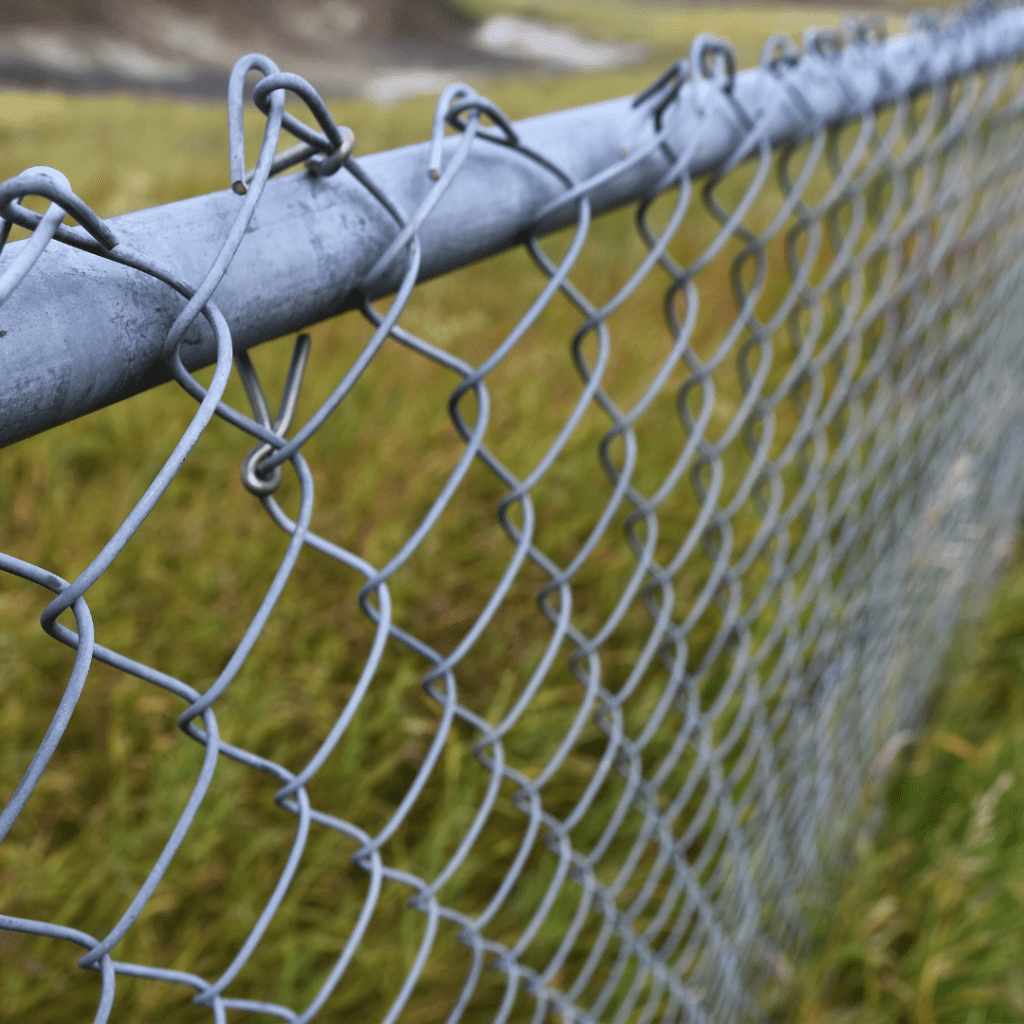
Choosing the Right Chain-Link Fence
When selecting a chain-link fence for enhanced security, several factors need to be considered.
Determining fence height and gauge
The height of the fence plays a crucial role in its security capabilities. Higher fences provide better deterrence for potential intruders. The gauge of the chain-link fabric, which refers to the thickness of the wires used, also impacts the fence’s strength and resistance to cutting or bending. Thicker gauge wires offer increased security.
Selecting appropriate mesh size
The mesh size refers to the size of the diamond-shaped openings in the chain-link fabric. The smaller the mesh size, the more difficult it is for someone to climb or squeeze through the fence. Choosing a smaller mesh size can enhance the security of the chain-link fence.
Choosing the right post material
The posts of a chain-link fence provide support and stability. They can be made of galvanized steel, aluminum, or other materials. Galvanized steel posts are known for their strength and durability, making them a popular choice for high-security installations. Aluminum posts offer a lightweight and corrosion-resistant option, suitable for both residential and commercial properties.
Considering additional features and accessories
To enhance security, various additional features and accessories can be incorporated into the chain-link fence system. This includes top railings, tension wire, and barbed wire, which make climbing or scaling the fence more difficult. Additionally, specialized lock systems for gates can provide an extra layer of security.
Enhancing Security with Chain-Link Fences
Chain-link fences can be further optimized for security with the following measures:
Chain-link fence security features
There are several security features that can be integrated into a chain-link fence system. These include anti-climbing measures such as razor wire, rotating spikes, or finials. Additionally, adding top railings, tension wire, or bottom rails can provide additional stability and security.
Integrating security systems
To enhance security, chain-link fences can be integrated with electronic security systems. This includes installing surveillance cameras, motion sensors, or alarms along the fence line. These systems provide an additional layer of security by detecting and notifying property owners of any potential security breaches.
Choosing suitable gate options
The gates of a chain-link fence are critical points of entry and should be designed to maximize security. Heavy-duty gate frames and hinges can improve gate strength, preventing unauthorized access. Accessories such as gate locks and self-closing mechanisms can also enhance the security of the gate.
Combining chain-link fences with other security measures
For optimal security, chain-link fences can be complemented with other security measures. These may include security lighting, access control systems, security patrols, or even guard dogs. By combining multiple security measures, property owners can create a comprehensive security solution.
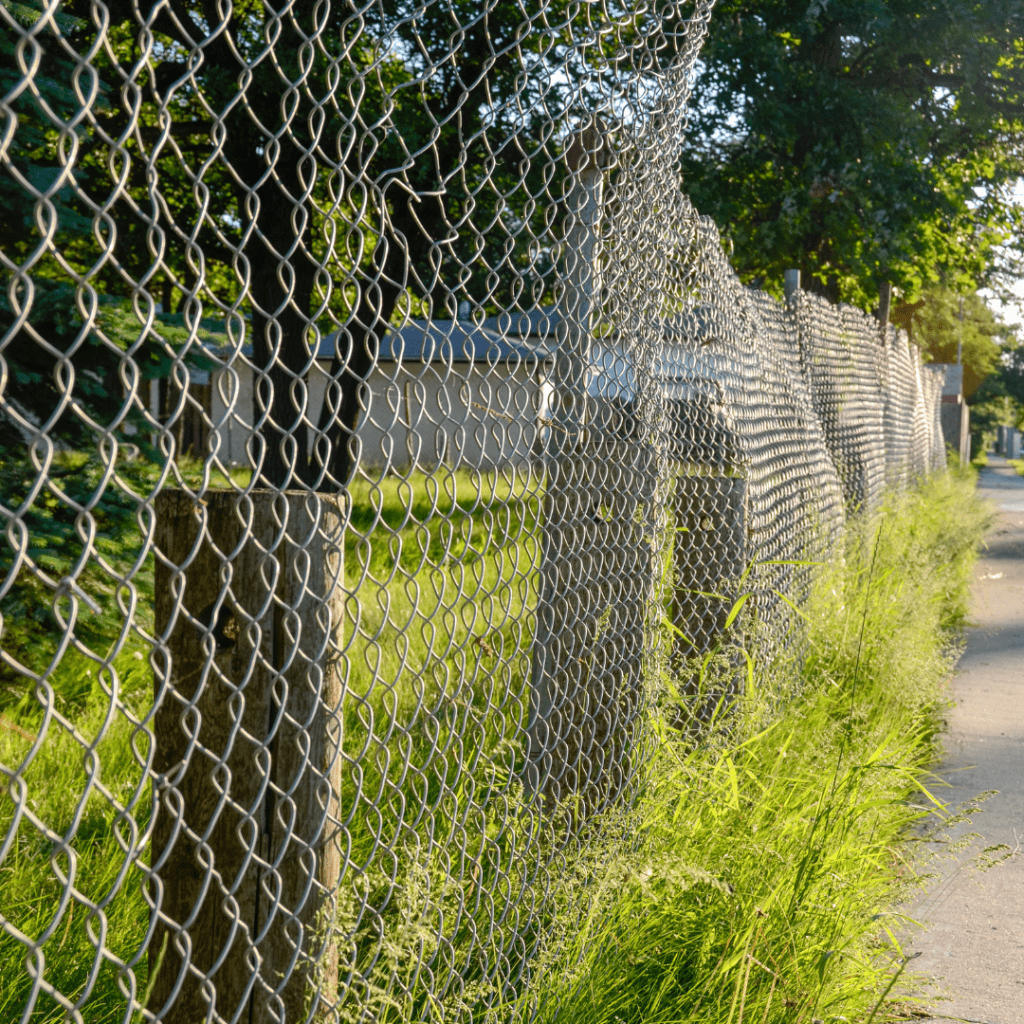
Chain-Link Fence Installation Process
Proper installation is crucial to ensure the security and longevity of a chain-link fence. Here are the key steps involved in the installation process:
Preparing the installation site
Before installing the fence, it is important to prepare the site properly. This includes clearing the area of any obstacles, marking the fence line, and ensuring that the ground is level.
Measuring and marking for the fence layout
Accurate measurements and marking are essential to ensure the fence is installed correctly and meets the desired specifications. This involves measuring the desired fence length, marking the corner and end posts, and using string lines to guide the installation process.
Digging post holes and setting posts
The next step is to dig post holes along the marked fence line. The depth and diameter of the holes depend on the height and thickness of the posts. Once the holes are dug, the posts are set into position and securely anchored using concrete or gravel.
Attaching the chain-link fabric and accessories
After the posts are set, the chain-link fabric is unrolled and attached to the posts using tension bars, tension bands, and wire ties. Additional accessories such as top railings, tension wire, or privacy slats can be installed to enhance the functionality and security of the fence.
Maintenance and Care for Chain-Link Fences
Regular maintenance and care can prolong the lifespan of a chain-link fence and ensure its continued functionality and security. Here are some maintenance tasks to consider:
Cleaning and removing debris
Periodically clean the fence with water and mild detergent to remove dirt, grime, and any accumulated debris. Use a soft brush or a cloth to scrub the chain-link fabric gently. Rinse thoroughly with water and allow it to dry.
Inspecting for damage and wear
Regularly inspect the fence for any signs of damage, wear, or loose components. Check for bent or broken wires, loose fittings, or damaged posts. Promptly address any issues to prevent further damage or compromise the security of the fence.
Repairing and replacing damaged components
If any components are damaged or worn out, they should be repaired or replaced promptly. This may include replacing damaged chain-link fabric, repairing loose fittings, or reinforcing weakened posts. It is important to use compatible materials and follow proper repair techniques.
Coating and protecting the fence
Applying a protective coating to the fence can help prevent rust and corrosion, extending its lifespan. There are various coatings available, including galvanized coatings or vinyl coatings that offer additional protection and enhance the visual appeal of the fence.

Enhancing Privacy with Chain-Link Fences
While chain-link fences are not inherently designed for privacy, there are several ways to enhance their privacy capabilities:
Privacy options for chain-link fences
Privacy slats or inserts are popular options for enhancing privacy in chain-link fences. These are available in different materials, colors, and styles, allowing individuals to choose the level of privacy they desire. Privacy fabric or mesh screens can also be attached to the fence for added privacy.
Using privacy slats or inserts
Privacy slats are designed to fit into the diamond-shaped openings of the chain-link fabric, creating a barrier that limits visibility. These slats are available in various materials such as PVC, aluminum, or composite, allowing property owners to match their desired aesthetics.
Planting foliage for natural privacy
Planting tall shrubs, trees, or climbing plants near the fence can provide natural privacy. These foliage options not only enhance privacy but also add greenery and beauty to the surroundings. However, it is essential to choose plants that are suitable for the local climate and will not damage the fence.
Creating visual barriers
In addition to privacy slats and plants, other visual barriers can be incorporated near the chain-link fence to enhance privacy. This includes installing decorative screens, trellises, or outdoor curtains that obstruct the view and create a more private environment.
Decorating and Personalizing Chain-Link Fences
Although chain-link fences are often considered utilitarian, they can be personalized and decorated to add aesthetic appeal to the property:
Painting and color options
Chain-link fences can be painted to change their appearance and match the style of the property. Choose a color that complements the surroundings or fits the overall aesthetic theme. Before painting, make sure to clean and prepare the fence surface properly for better adhesion.
Adding decorative elements and accessories
Various decorative elements and accessories can be added to enhance the visual appeal of chain-link fences. This includes attaching decorative caps to the top of the posts, installing finials or ornamental gate hinges, or incorporating decorative scrolls or patterns into the chain-link fabric.
Incorporating artwork and murals
Chain-link fences provide a canvas for incorporating artwork and murals. By commissioning a local artist or utilizing pre-designed artwork, the fence can become an attractive focal point and showcase the property owner’s personality and creativity.
Using lighting for aesthetic appeal
Strategic placement of lighting along the chain-link fence can create a visually appealing effect. Options include solar-powered or low-voltage LED lights that highlight the fence line, illuminate decorative elements, or provide ambient lighting for the surrounding area.
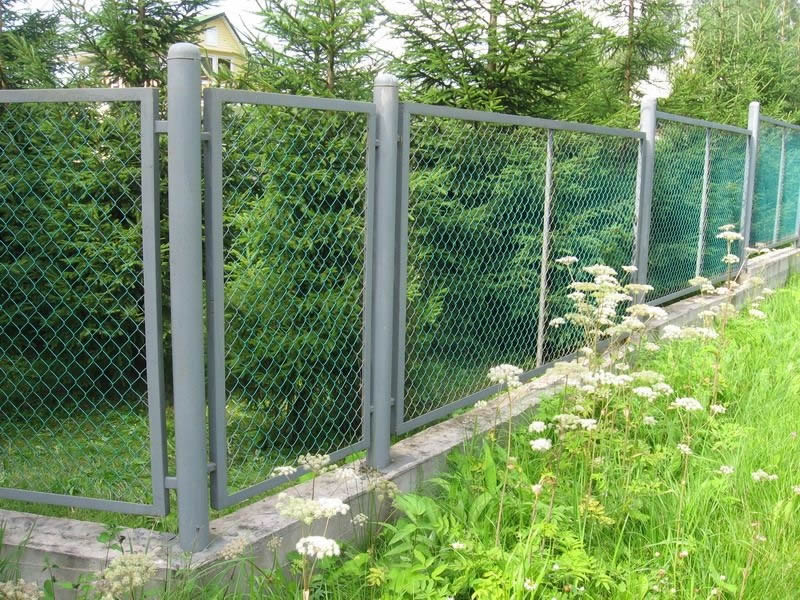
Chain-Link Fence Maintenance FAQ
How often should I inspect my chain-link fence?
Regular inspections should be done at least once or twice a year. However, it is recommended to inspect the fence after severe weather conditions, such as storms or heavy winds, to ensure there is no damage.
What are the common signs of damage to look out for?
Common signs of damage include rust or corrosion, bent or broken wires, loose fittings or fasteners, sagging chain-link fabric, or damaged posts.
How can I remove rust from a chain-link fence?
To remove rust from a chain-link fence, start by scrubbing the affected areas with a wire brush. Then, apply a rust remover or a mixture of vinegar and water. Rinse thoroughly and coat the fence with a rust-resistant paint or coating.
What should I do if my chain-link fence is leaning?
If a chain-link fence is leaning, it may be due to weak or damaged posts. To fix this issue, you can reinforce the posts by adding additional support or replacing the posts with more sturdy ones.
Can I paint my chain-link fence?
Yes, chain-link fences can be painted. Make sure to clean the fence surface thoroughly before painting, and use a paint specifically designed for outdoor metal surfaces.
How do I repair a tear in the chain-link fabric?
To repair a tear in the chain-link fabric, you can use a repair kit or patch the tear using galvanized wire. Ensure that the patch is securely attached to the surrounding fabric for optimal strength and durability.
What can I do to prevent vegetation growth on my fence?
To prevent vegetation growth on the fence, regularly trim any plants or vines that come into contact with the chain-link fabric. Additionally, a herbicide or a commercial vegetation killer can be applied near the fence to deter growth.
How do I secure loose or sagging chain-link fabric?
To secure loose or sagging chain-link fabric, tighten the tension wire or use additional tension bands and wire ties to secure it to the posts. If the fabric is severely damaged, it may need to be replaced.
Are there any specific cleaning products for chain-link fences?
Any mild detergent or soap can be used to clean chain-link fences. Avoid using abrasive cleaners or tools that may damage the fence surface.
How can I minimize noise transmission through a chain-link fence?
To minimize noise transmission, additional measures can be taken such as installing sound-absorbing materials, planting vegetation near the fence, or constructing a secondary fence or barrier for noise reduction.
Chain-Link Fence Security FAQ
What additional security measures can I combine with a chain-link fence?
In addition to a chain-link fence, you can combine security measures such as electronic surveillance systems, access control systems, security lighting, or even security patrols.
Are there specific gate options for enhanced security?
Yes, there are gate options specifically designed to enhance security. These include heavy-duty gate frames, reinforced hinges, specialized lock systems, and self-closing mechanisms.
Is it possible to integrate a security system with a chain-link fence?
Yes, a security system can be integrated with a chain-link fence. This includes installing surveillance cameras, motion sensors, or alarms along the fence line to enhance security measures.
How can I prevent trespassing through a chain-link fence?
To prevent trespassing through a chain-link fence, you can enhance the security features by adding top railings, tension wire, barbed wire, or anti-climbing measures such as razor wire or rotating spikes.
Are there any regulations or permits required for installing a chain-link fence?
Regulations and permit requirements vary by location. It is advisable to check with local authorities or consult a professional fence installer to ensure compliance with any applicable regulations or permit requirements.
Can I use a chain-link fence for protecting valuable assets?
While chain-link fences provide a level of security, they may not be the most secure option for protecting highly valuable assets. In such cases, additional security measures such as advanced access control systems or electronic surveillance may be necessary.
What height of chain-link fence is recommended for optimal security?
The height of the chain-link fence depends on the level of security required. Higher fences provide better deterrence. It is advisable to consult with a professional to determine the appropriate height based on specific needs.
Are there any specialized lock options for chain-link fence gates?
Yes, there are specialized lock options available for chain-link fence gates. These may include high-security padlocks, keyless entry systems, or electric locks that can be integrated with access control systems.
Can I install security cameras on a chain-link fence?
Yes, security cameras can be installed on a chain-link fence to enhance the surveillance capabilities and provide added security.
How can I ensure the durability of my chain-link fence against vandalism?
To enhance the durability of a chain-link fence against vandalism, consider using thicker gauge wire for the chain-link fabric, reinforced posts, and additional security features such as razor wire or rotating spikes.
Conclusion
Enhancing security with chain-link fences is a practical and cost-effective solution for property owners. While chain-link fences may have certain disadvantages, their durability, low maintenance requirements, and versatility make them a popular choice. By considering various factors such as the fence height, mesh size, post material, and additional security features, property owners can tailor their chain-link fence installation to their specific security needs. Regular maintenance and care, along with additional privacy and decorative options, further enhance the functionality and visual appeal of chain-link fences. By understanding the advantages, disadvantages, and maintenance requirements of chain-link fences, property owners can make informed decisions and create an environment that offers both security and aesthetic appeal.
Topic Questions and Answers
-
Q: How often should I inspect my chain-link fence? A: It is recommended to inspect the fence once or twice a year, or after severe weather conditions.
-
Q: What are the common signs of damage to look out for in a chain-link fence? A: Common signs of damage include rust or corrosion, bent or broken wires, loose fittings or fasteners, sagging chain-link fabric, or damaged posts.
-
Q: How can I remove rust from a chain-link fence? A: To remove rust, scrub the affected areas with a wire brush, apply a rust remover or vinegar and water mixture, rinse thoroughly, and coat with a rust-resistant paint or coating.
-
Q: What should I do if my chain-link fence is leaning? A: If a chain-link fence is leaning, reinforce the posts by adding additional support or replacing them with sturdier ones.
-
Q: Can I paint my chain-link fence? A: Yes, chain-link fences can be painted. Proper cleaning and preparation of the fence surface are necessary for better adhesion.
-
Q: How do I repair a tear in the chain-link fabric? A: To repair a tear, use a repair kit or patch the tear using galvanized wire. Ensure the patch is securely attached to the surrounding fabric.
-
Q: How can I prevent vegetation growth on my chain-link fence? A: Regularly trim any plants or vines near the fence and consider applying a herbicide or commercial vegetation killer to deter growth.
-
Q: Are there specific gate options for enhanced security with chain-link fences? A: Yes, specific gate options such as heavy-duty frames, reinforced hinges, and specialized lock systems are available for enhanced security.
-
Q: Are there any regulations or permits required for installing a chain-link fence? A: Regulations and permit requirements vary by location, so it is advisable to check with local authorities or consult a professional fence installer.
-
Q: How can I ensure the durability of my chain-link fence against vandalism? A: To enhance durability against vandalism, consider using thicker gauge wire, reinforced posts, and additional security features such as razor wire or rotating spikes.
